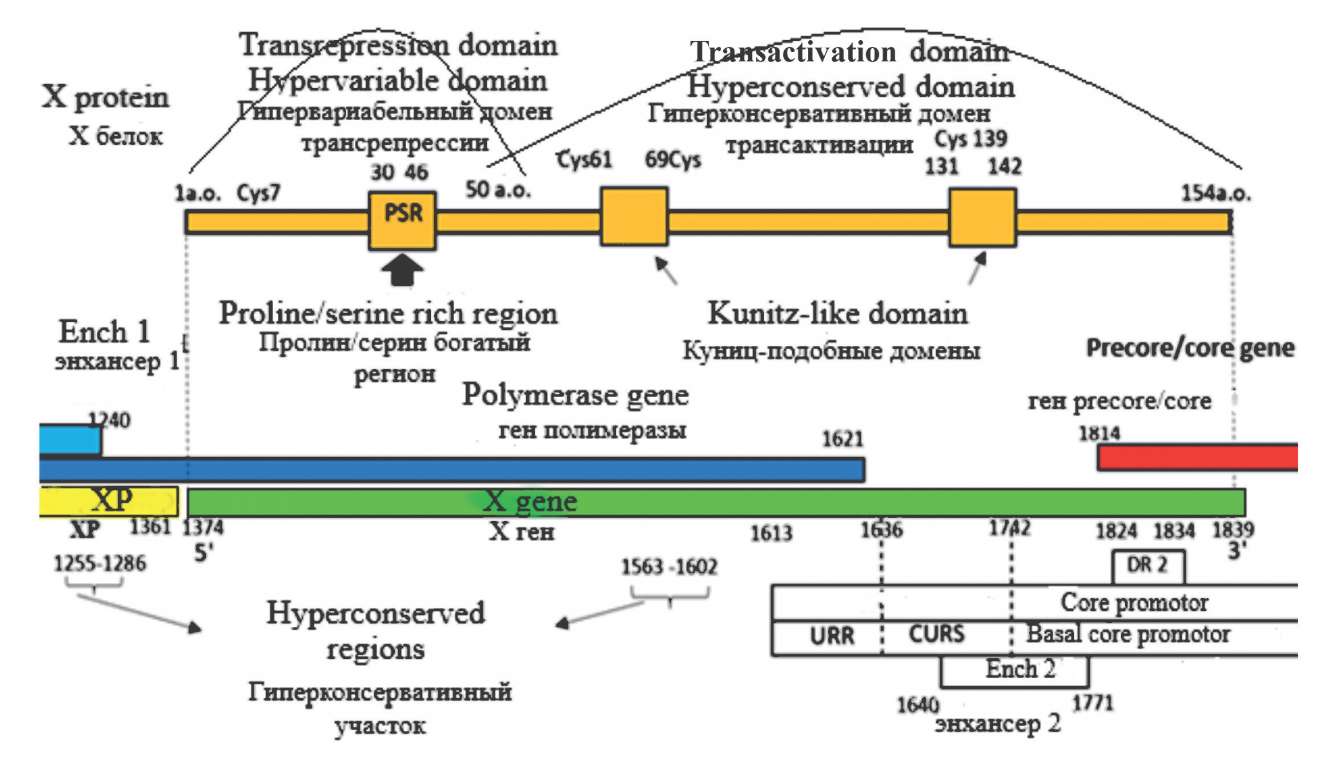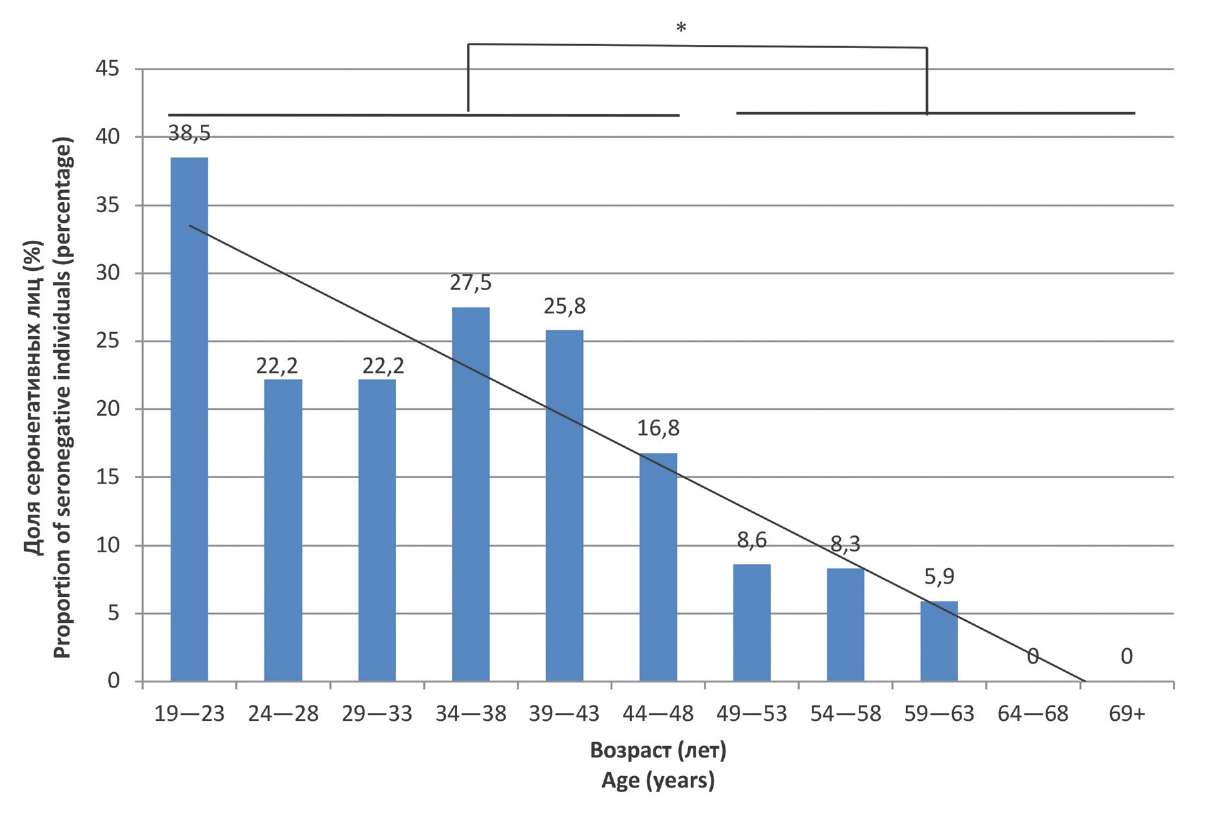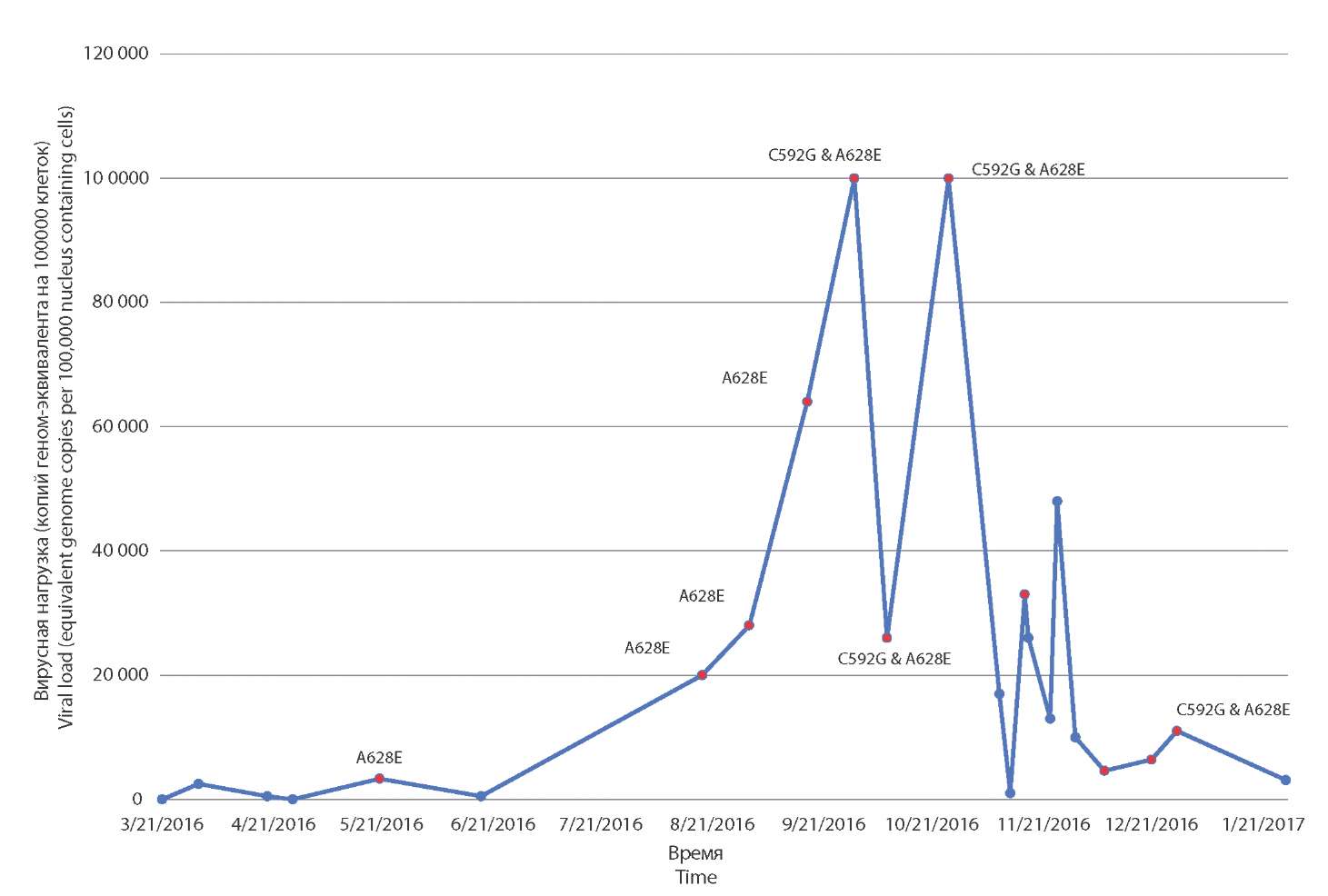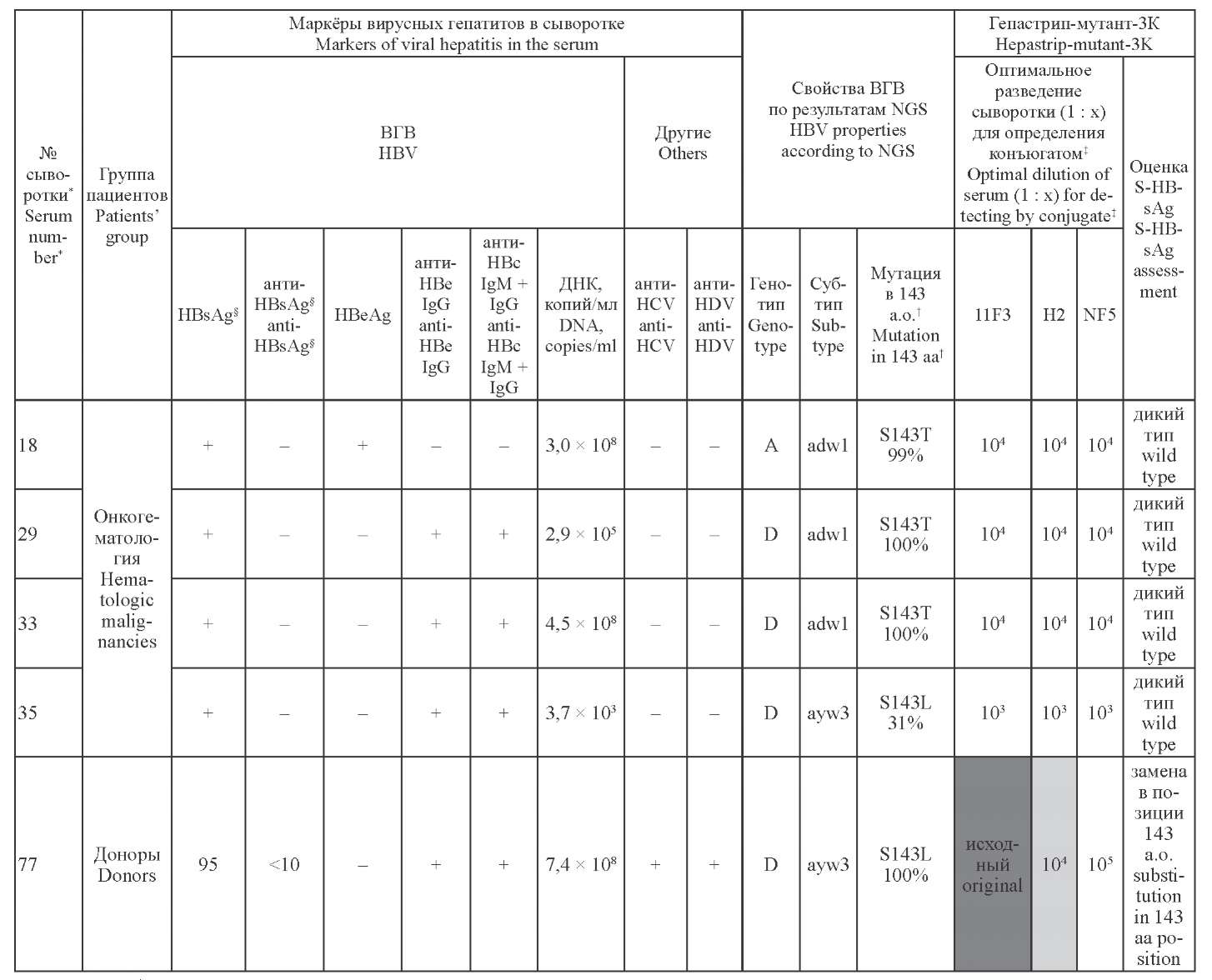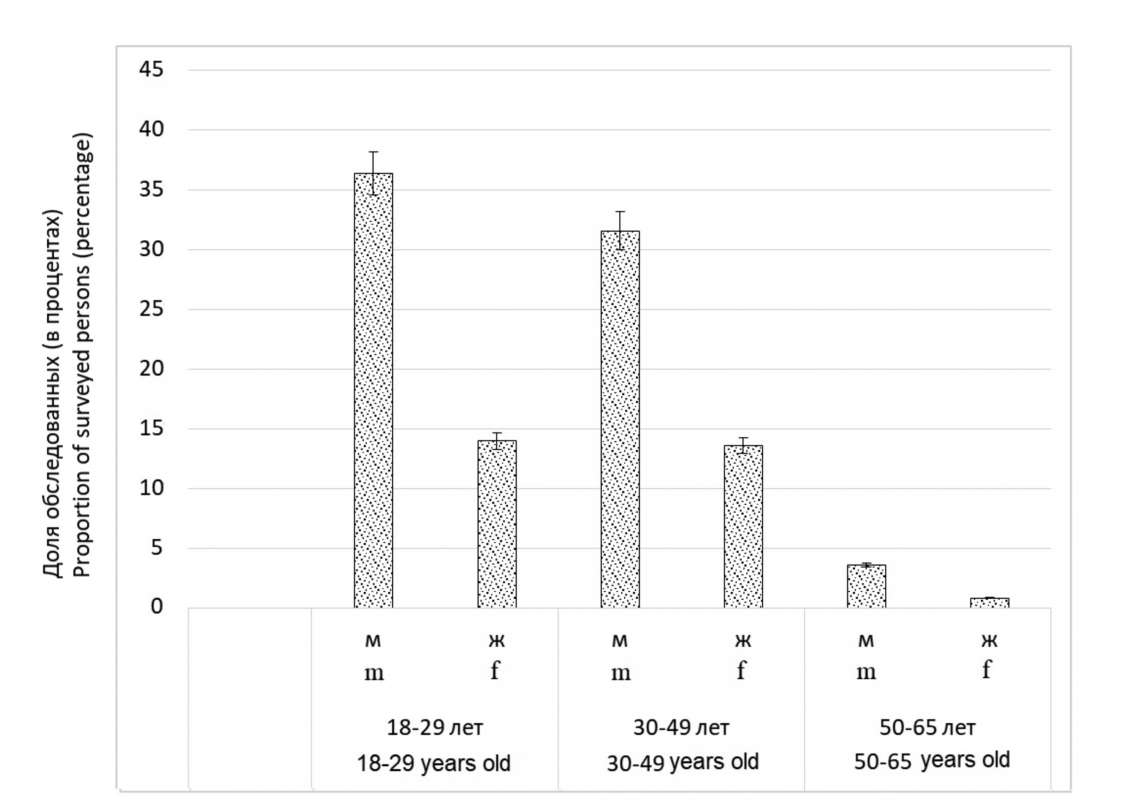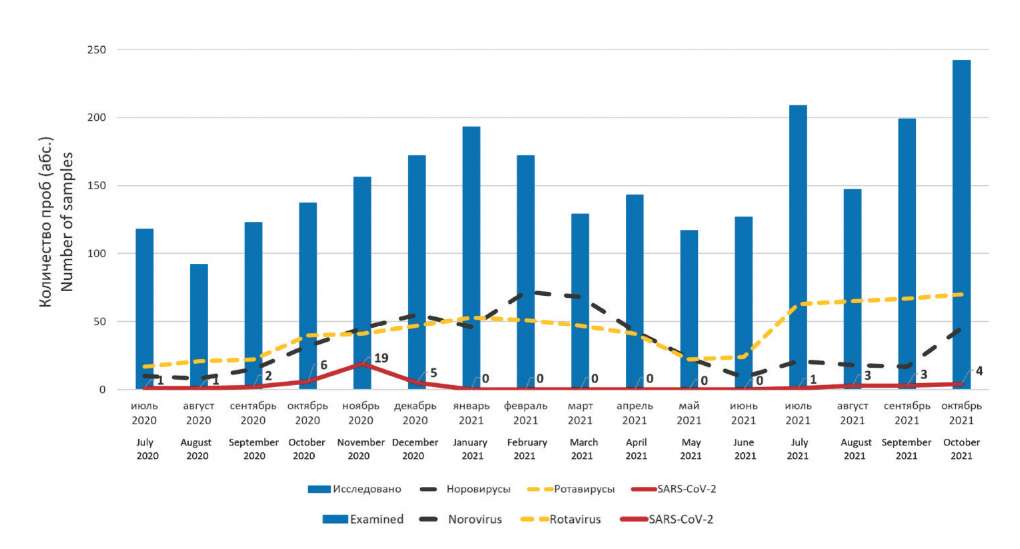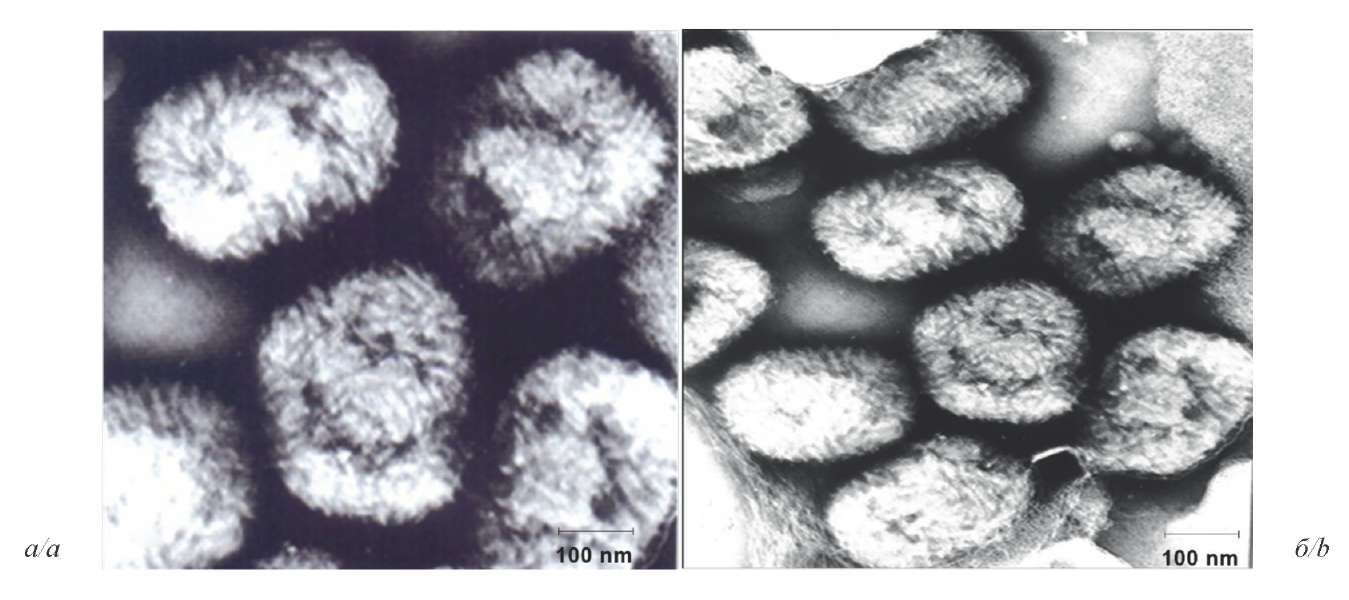Vol 67, No 1 (2022)
- Year: 2022
- Published: 16.03.2022
- Articles: 9
- URL: https://virusjour.crie.ru/jour/issue/view/54
Full Issue
REVIEWS
Modern views on the role of X gene of the hepatitis B virus (Hepadnaviridae: Orthohepadnavirus: Hepatitis B virus) in the pathogenesis of the infection it causes
Abstract
The review presents information on the role of hepatitis B virus (Hepadnaviridae: Orthohepadnavirus: Hepatitis B virus) (HBV) X gene and the protein it encodes (X protein) in the pathogenesis of viral hepatitis B. The evolution of HBV from primordial to the modern version of hepadnaviruses (Hepadnaviridae), is outlined as a process that began about 407 million years ago and continues to the present. The results of scientific works of foreign researchers on the variety of the influence of X protein on the infectious process and its role in the mechanisms of carcinogenesis are summarized. The differences in the effect of the X protein on the course of the disease in patients of different ethnic groups with regard to HBV genotypes are described. The significance of determining the genetic variability of X gene as a fundamental characteristic of the virus that has significance for the assessment of risks of hepatocellular carcinoma (HCC) spread among the population of the Russian Federation is discussed.
 7-17
7-17


Genetic diversity and distribution of bovine pestiviruses (Flaviviridae: Pestivirus) in the world and in the Russian Federation
Abstract
The genus Pestivirus of the family Flaviviridae includes 11 species. Bovine pestiviruses are the causative agents of viral diarrhea/mucosal disease and include three genetically distinct species: pestivirus A (BVDV-1), B (BVDV-2), and H (BVDV-3). The number of BVDV-1 subtypes is 21, BVDV-2 – 4, and BVDV-3 – 4, which complicates the diagnosis of associated diseases, reduces the effectiveness of vaccination and control programs.
We performed the search in the PubMed, Web of Science, Scopus, eLIBRARY.RU databases for articles published in 2000–2021.
Pestivirus A is distributed everywhere, although the largest number of subtypes was found in cattle in Italy and China. The virus is widespread in the Central region of the Russia (subtypes 1a and 1m). In Siberia, eleven subtypes circulate among native and imported animals: 1a (5%), 1b (35%), 1c (5%), 1d (10%), 1f (20%), 1g, 1i (both 2.5%), 1j, 1k, 1p, and 1r (all for 5%). Pestivirus B subtype is more virulent, found less frequently and mainly in the North and South America, in some European countries, and in Asia. Three subtypes have been identified in Siberia: 2a (25%), 2b (10%), and 2c (5%). Pestivirus H circulates in Europe, Asia and South America. The main route of entry is contaminated biological products. In Russia, BVDV-3 of the Italian-Brazilian group (3a) was detected in 7 lots of fetal bovine serum.
The role of the virus in the occurrence of respiratory diseases in calves, abortion, systemic infection and enteritis in calves and adult animals has been established. The source of the virus in such cases was a contaminated modified live vaccine.
 18-26
18-26


ORIGINAL RESEARCHES
Comparison of measles incidence in different age groups with the intensity of specific humoral immunity in healthcare workers in Moscow
Abstract
Introduction. The study of the intensity of humoral immunity to the measles virus (Paramyxoviridae: Morbillivirus) (MV) remains relevant due to the ongoing registration of the cluster cases of measles (including nosocomial cases).
The aim of the study was to analyze correlation between the intensity of the humoral immunity to measles virus and the measles incidence in different age groups of the Moscow residents.
Material and methods. A simple analytic study was carried out under the framework of measles prevention improvement program conducted in the subjects of the Russian Federation. The study included the analysis of the reasons for the increase in the proportion of seronegative individuals and the comparison of the results of seromonitoring with the data of age-related measles incidence. Throughout 2018, total 1,855 blood serum samples obtained from employees of a large hospital center in Moscow who were previously vaccinated against measles were tested for IgG antibodies (ABs) to MV. The subjects were divided into 11 groups according to their age. Statistical analysis of the obtained data was performed using nonparametric criteria.
Results and discussion. The proportion of seronegative individuals among the staff of the medical facility decreased with age, from 38.5% in persons aged 19–23 to 0% among employees aged 64 and over. Persons aged 19–43 years were the most susceptible to measles infection, which was confirmed also by the highest incidence rate at these age groups (from 6.93 to 14.03 per 100,000 population). The age group most protected against measles was those over 64 years of age, who were all seropositive and had the lowest rates of incidence. This is probably due to the fact that by this age most of them have had a measles infection and have formed a sufficient immune response. At the same time, younger individuals living in the post-elimination era have only vaccine-induced ABs to MV, the level of which declines rapidly to non-protective values in the absence of boosterization due to the exposure to the wild-type strain of the pathogen.
Conclusion. The monitoring of the MV-specific IgG- AB levels is required for employees in the medical institutions under the age of 35. Administration of the single dose of the appropriate vaccine is recommended for seronegative individuals.
 27-36
27-36


Mutations in the UL97 gene of cytomegalovirus (Herpesvirales: Herpesviridae: Cytomegalovirus: Human betaherpesvirus 5) associated with ganciclovir resistance in recipients of allogeneic hematopoietic stem cells
Abstract
Introduction. Infection caused by cytomegalovirus (CMV) is a serious problem for patients with weakened immunity, including patients with hematopoietic depression. The cases of complications associated with cytomegalovirus require antiviral therapy. However, during the natural mutation process, especially with prolonged use of drugs in suboptimal doses, CMV strains resistant to the action of antiviral drugs (such as ganciclovir, valganciclovir) may occur. Hypothetically, the emergence of resistance in the virus may cause a more aggressive course of infection, the ineffectiveness of antiviral therapy and, as a result, an increase in the number of deaths. In this regard, timely detection of mutations that can potentially lead to the resistance of the virus to antiviral drugs during hematopoietic stem cell transplantation (HSCT), as well as during organ and tissue transplantation, may be important when making a therapeutic decision. We describe three clinical cases for which the dynamics of the appearance of a mutant strain of CMV by the UL97 gene, which correlates with the viral load and clinical picture, is analyzed.
The aim of the study was to determine the timing of the occurrence of mutations in CMV phosphotransferase UL97 gene associated with resistance to antiviral drugs in patients with hemoblastoses after allogeneic hematopoietic stem cell (allo-HSCs) transplantation.
Material and methods. The study included 48 samples of CMV DNA isolated from the peripheral blood of three allo-HSCs recipients with CMV infection who were treated in the clinics of the FSBI «National Medical Research Center for Hematology» of the Ministry of Health of Russia with oncohematological diseases during 2015–2017. Patients received conditional codes (PR, PD, and FS). Mutations associated with antiviral therapy (AVT) resistance were identified in all patients. Sanger sequencing was used for mutation detection. The obtained DNA sequences were analyzed using Nucleotide BLAST and Genome compiler software. Mutations were searched in MRA mutation resistance analyzer software. The nucleotide sequences were compared with the UL97 reference sequence of the Merlin CMV strain using this software environment.
Results and discussion. For all patients in whom the virus strains containing C592G (PR), C607F (PD) and C603W (FS) mutations were detected, the timing of the mutation occurrence was determined at days 187, 124 and 1184, respectively. The emergence of mutations with a high resistance factor was shown to be accompanied by an increase in viral load (VL), the appearance of a clinical picture characteristic of CMV infection and a lack of an adequate response to therapy with ganciclovir and its derivatives.
Conclusion. Using these results, it is proposed to develop the test system based on random polymerase chain reaction (rPCR) to detect mutations in the most frequently encountered codons: M460I/V, C592G, A591V, A594T/V, L595F/S, C603W. Given that the data on the prevalence of these mutations were obtained from foreign sources, it is advisable to conduct similar studies on the frequency of mutations in the UL97 gene among the population of the Russian Federation in order to improve the quality and accuracy of test systems.
 37-47
37-47


Identification by enzyme immunoassay of escape mutants S143L and G145R of hepatitis B virus (Hepadnaviridae: Orthohepadnavirus: Hepatitis B virus)
Abstract
Introduction. The achievement of the goal of the World Health Organization to eliminate viral hepatitis B by 2030 seems to be problematic partly due to the presence of escape mutants of its etiological agent, hepatitis B virus (HBV) (Hepadnaviridae: Orthohepadnavirus: Hepatitis B virus), that are spreading mainly in the risk groups. Specific routine diagnostic assays aimed at identification of HBV escape mutants do not exist.
The study aimed the evaluation of the serological fingerprinting method adapted for routine detection of escape mutations in 143 and 145 aa positions of HBV surface antigen (HBsAg).
Material and methods. HBV DNA from 56 samples of HBsAg-positive blood sera obtained from donors, chronic HBsAg carriers and oncohematology patients has been sequenced. After the identification of mutations in HBsAg, the samples were tested in the enzyme-linked immunosorbent assay (ELISA) kit «Hepastrip-mutant-3K».
Results and discussion. Escape mutations were detected mainly in patients with hematologic malignancies. Substitutions in 143 and 145 aa were found in 10.81% and in 8.11% of such patients, respectively. The G145R mutation was recognized using ELISA kit in almost all cases. The kit specifically recognized the S143L substitution in contrast to the S143T variant. The presence of neighbor mutation D144E can be assumed due to it special serological fingerprint.
Conclusion. ELISA-based detection of escape mutations S143L, D144E and G145R can be used for routine diagnostics, especially in the risk groups. The diagnostic parameters of the kit can be refined in additional studies. This immunoassay and methodology are applicable for the development and quality control of vaccines against escape mutants.
 48-58
48-58


Prevalence of viral hepatitis B markers among blood donors in the Republic of Guinea
Abstract
Introduction. The problem of transfusion safety in relation to parenteral viral hepatitis still remains relevant. Viral hepatitis B (HB) remains the most common viral infection transmitted through transfusion procedures. One of the natural phases of chronic hepatitis B (CHB) is occult hepatitis B infection (OBI), characterized by an undetectable HBsAg (regardless of the other serological markers content) in the presence of hepatitis B virus (HBV) DNA in the liver tissue and an extremely low, up to undetectable, level of viral load in the blood. In the Republic of Guinea, as in most countries on the continent, the prevention of HBV transmission through transfusion is still based on HBsAg serological testing of donors only. In this connection, OBI remains as a potential threat to blood transfusion safety. Detection of HBV DNA is a reliable preventive measure against transmission of the virus from donors with HBsAg-negative HBV infection, especially in highly endemic regions. In this regard, the study was conducted to substantiate recommendations for improving blood safety against the background of significant HBV prevalence in the Republic of Guinea.
The aim of the work was the evaluation of serological and molecular markers of HBV infection in blood donors in the Republic of Guinea.
Material and methods. We examined 250 blood samples obtained from donors living in Conakry, Republic of Guinea. Samples were tested for the presence of serological (surface antigen, HBsAg; antibodies (ABs) to surface (anti-HBs IgG) and core (anti-HBc IgG) antigens) and molecular (DNA) markers of HBV infection.
Results and discussion. The overall detection rate of hepatitis B markers was 83.2%; HBsAg was detected in 16.4% of all individuals. The high incidence of HBsAg in men (19.55%) compared to women (8.45%) was shown, the relative risk of HBV infection with the formation of HBsAg-positive chronic hepatitis B in males was also significantly higher. The prevalence of the HBV DNA in the study group was 30.4%, the OBI cases accounted for 15.6%. The prevalence of this form of the disease was shown in donors aged 30–49 years (24.78%), in the group of people younger than 30 years, the incidence was lower (8.73%), and at the age of over 50 years, OBI was not detected. Based on the phylogenetic analysis of 76 virus isolates, it was shown that genotype E prevails in the examined group (85.53%).
Cases of pathogen DNA detection occurred in HBsAg-negative blood donors in the presence of anti-HBs IgG (n = 4), as well as in the simultaneous presence of ABs anti-HBs IgG and anti-HBc IgG (n = 7). The viral load exceeded 200 IU/ml in OBI samples. Escape mutations were detected by sequencing in each OBI sample, contributing to the virus escaping from diagnostic based on screening for HBsAg.
Conclusion. Assessment of the prevalence viral hepatitis B markers in blood donors, determination of genotypes and clinically significant mutations of virus variants are necessary to ensure safe medical manipulations, control and prevention of the spread of this infectious agent.
 59-68
59-68


Detection SARS-CoV-2 (Coronaviridae: Coronavirinae: Betacoronavirus: Sarbecovirus) in children with acute intestinal infection in Nizhny Novgorod during 2020–2021
Abstract
Introduction. The novel coronavirus infection COVID-19 is a major public health problem worldwide. Several publications show the presence of gastrointestinal (GI) symptoms (nausea, vomiting, and diarrhea) in addition to respiratory disorders.
The aim of this study was the monitoring of RNA of COVID-19 pathogen, coronavirus SARS-CoV-2 (Coronaviridae: Coronavirinae: Betacoronavirus; Sarbecovirus) in children hospitalized with acute intestinal infection (AII), with following molecular-genetic characterization of detected strains.
Material and methods. Fecal samples of children with AII hospitalized in infectious hospital of Nizhny Novgorod (Russia) in the period from 01.07.2020 to 31.10.2021 were used as material for the study. Viral RNA detection was performed by real-time polymerase chain reaction (RT-PCR). The nucleotide sequence of S-protein gene fragment was determined by Sanger sequencing.
Results and discussion. SARS-CoV-2 genetic material was detected in 45 out of 2476 fecal samples. The maximum number of samples containing RNA of the virus occurred in November 2020 (detection rate of 12.2%). In 20.0% of cases, SARS-CoV-2 RNA was detected in combination with rota-, noro-, and adenoviruses. 28 nucleotide sequences of S-protein gene fragment complementary DNA (cDNA) were determined. Phylogenetic analysis showed that the studied SARS-CoV-2 strains belonged to two variants. Analysis of the S-protein amino acid sequence of the strains studied showed the absence of the N501Y mutation in the 2020 samples, which is a marker for variants with a high epidemic potential, called variants of concern (VOC) according to the World Health Organization (WHO) definition (lines Alpha B.1.1.7, Beta B.1.351, Gamma P.1). Delta line variant B.1.617.2 was identified in two samples isolated in September 2021.
Conclusion. The detection of SARS-CoV-2 RNA in the fecal samples of children with AII, suggesting that the fecal-oral mechanism of pathogen transmission may exist, determines the necessity to optimize its monitoring and to develop an algorithm of actions with patients with signs of AII under the conditions of a novel coronavirus infection pandemic.
 69-76
69-76


Isolation of a new strain М-2020 of the camelpox virus (Poxviridae: Orthopoxvirus: Camelpox virus) in Republic of Kazakhstan and study of its reproduction in various biological systems
Abstract
Introduction. This article presents the results of isolation of camel smallpox virus (Poxviridae: Orthopoxvirus: Camelpox virus, CMLPV) and study of its reproductive properties on sensitive biological systems.
Material and methods. The epizootic strain M-96 of the virus as well as its attenuated variants KM-40 and KM-70 obtained by sequential passivation were used in the study. Isolation of the pathogen from suspension of biopsy specimens was performed on cell culture and in embryonated chicken eggs (ECEs). All experiments were performed with the number of replications ensuring obtaining reliable results.
Results. The CMLPV was isolated from the crusts and pox papules of the skin taken from sick camels (Camelus bactrianus) during an outbreak in various districts of the Mangistau region at the end of 2019. The signs of pathogen reproduction on chorio-allantoic membrane (CAM) were observed from 3 passages. The obtained virus caused formation of pathological changes on the CAM in the form of elevated dot or solid white formations separated from the surrounding tissue, with hemorrhagic foci in the center. The reproductive properties of the isolate on sensitive biological systems were determined in comparison with the epizootic CMLPV strain M-96, isolated earlier in the territory of Kazakhstan during the outbreak 23–24 years ago, as well as its attenuated variants. The isolated virus was given the conventional name M-2020.
Discussion. When studied in two sensitive cultivation systems (cell culture and ECEs), strain M-96 and its attenuated variants KM-40, KM-70, which were used in the experiments as a control, demonstrated high infectious activity with titer 4.75-6.75 lg TCID50/cm3, while for the examined isolate M-2020 of CMLPV had the significantly lower values (3.00-4.75 lg TCID50/cm3, p > 0,05).
 77-86
77-86


ANNIVERSARY DATES
 87-88
87-88











